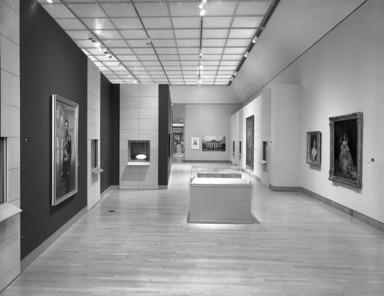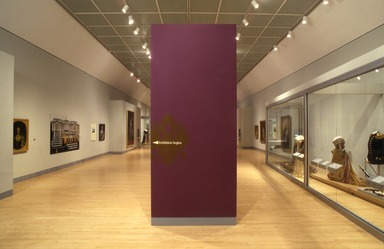

Jewels of the Romanovs: Treasures of the Russian Imperial Court, March 20, 1998 through July 05, 1998 (Image: DEC_E1998i001.jpg Brooklyn Museum photograph, 1998)
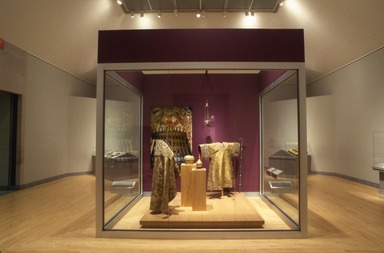
Jewels of the Romanovs: Treasures of the Russian Imperial Court, March 20, 1998 through July 05, 1998 (Image: DEC_E1998i002.jpg Brooklyn Museum photograph, 1998)
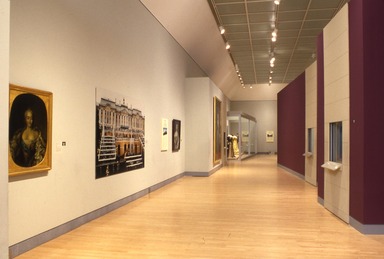
Jewels of the Romanovs: Treasures of the Russian Imperial Court, March 20, 1998 through July 05, 1998 (Image: DEC_E1998i003.jpg Brooklyn Museum photograph, 1998)

Jewels of the Romanovs: Treasures of the Russian Imperial Court, March 20, 1998 through July 05, 1998 (Image: DEC_E1998i004.jpg Brooklyn Museum photograph, 1998)

Jewels of the Romanovs: Treasures of the Russian Imperial Court, March 20, 1998 through July 05, 1998 (Image: DEC_E1998i005.jpg Brooklyn Museum photograph, 1998)
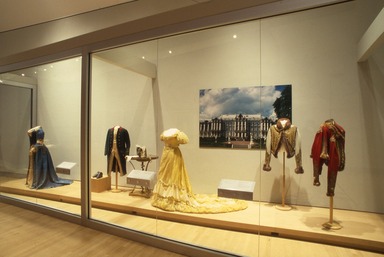
Jewels of the Romanovs: Treasures of the Russian Imperial Court, March 20, 1998 through July 05, 1998 (Image: DEC_E1998i006.jpg Brooklyn Museum photograph, 1998)
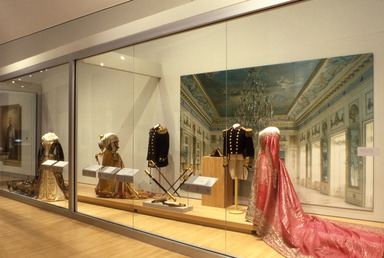
Jewels of the Romanovs: Treasures of the Russian Imperial Court, March 20, 1998 through July 05, 1998 (Image: DEC_E1998i007.jpg Brooklyn Museum photograph, 1998)
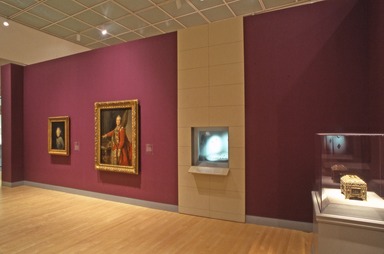
Jewels of the Romanovs: Treasures of the Russian Imperial Court, March 20, 1998 through July 05, 1998 (Image: DEC_E1998i008.jpg Brooklyn Museum photograph, 1998)
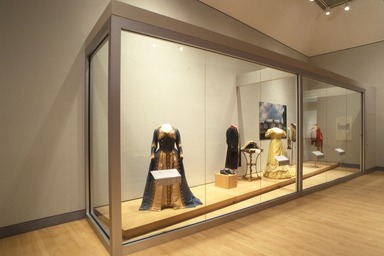
Jewels of the Romanovs: Treasures of the Russian Imperial Court, March 20, 1998 through July 05, 1998 (Image: DEC_E1998i009.jpg Brooklyn Museum photograph, 1998)
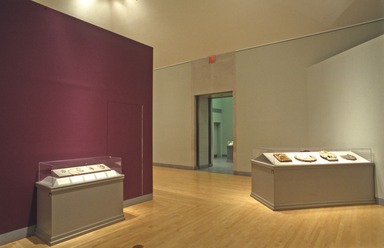
Jewels of the Romanovs: Treasures of the Russian Imperial Court, March 20, 1998 through July 05, 1998 (Image: DEC_E1998i010.jpg Brooklyn Museum photograph, 1998)
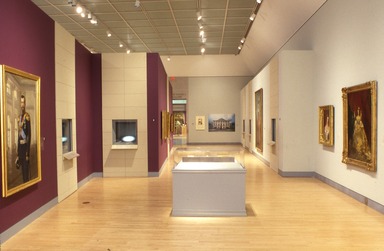
Jewels of the Romanovs: Treasures of the Russian Imperial Court, March 20, 1998 through July 05, 1998 (Image: DEC_E1998i011.jpg Brooklyn Museum photograph, 1998)
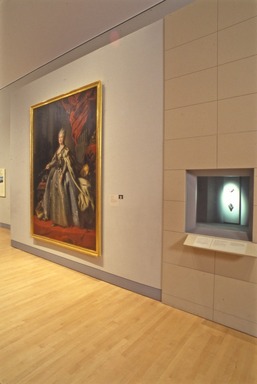
Jewels of the Romanovs: Treasures of the Russian Imperial Court, March 20, 1998 through July 05, 1998 (Image: DEC_E1998i012.jpg Brooklyn Museum photograph, 1998)
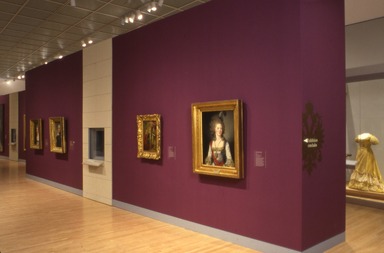
Jewels of the Romanovs: Treasures of the Russian Imperial Court, March 20, 1998 through July 05, 1998 (Image: DEC_E1998i013.jpg Brooklyn Museum photograph, 1998)
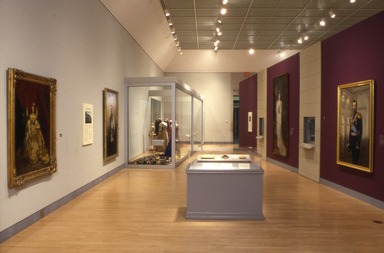
Jewels of the Romanovs: Treasures of the Russian Imperial Court, March 20, 1998 through July 05, 1998 (Image: DEC_E1998i014.jpg Brooklyn Museum photograph, 1998)
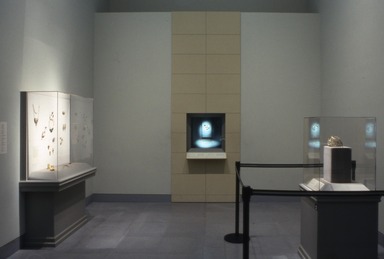
Jewels of the Romanovs: Treasures of the Russian Imperial Court, March 20, 1998 through July 05, 1998 (Image: DEC_E1998i015.jpg Brooklyn Museum photograph, 1998)

Jewels of the Romanovs: Treasures of the Russian Imperial Court, March 20, 1998 through July 05, 1998 (Image: DEC_E1998i016.jpg Brooklyn Museum photograph, 1998)

Jewels of the Romanovs: Treasures of the Russian Imperial Court, March 20, 1998 through July 05, 1998 (Image: DEC_E1998i017.jpg Brooklyn Museum photograph, 1998)
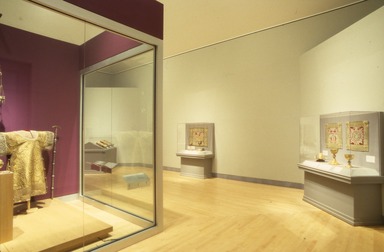
Jewels of the Romanovs: Treasures of the Russian Imperial Court, March 20, 1998 through July 05, 1998 (Image: DEC_E1998i018.jpg Brooklyn Museum photograph, 1998)
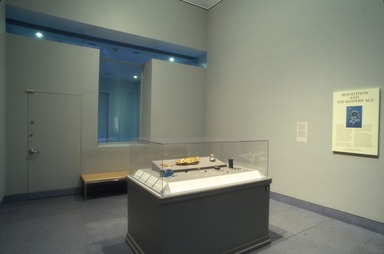
Jewels of the Romanovs: Treasures of the Russian Imperial Court, March 20, 1998 through July 05, 1998 (Image: DEC_E1998i019.jpg Brooklyn Museum photograph, 1998)
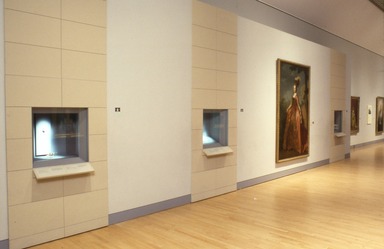
Jewels of the Romanovs: Treasures of the Russian Imperial Court, March 20, 1998 through July 05, 1998 (Image: DEC_E1998i020.jpg Brooklyn Museum photograph, 1998)
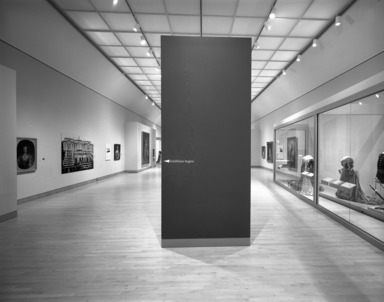
Jewels of the Romanovs: Treasures of the Russian Imperial Court, March 20, 1998 through July 05, 1998 (Image: PHO_E1998i014.jpg Brooklyn Museum photograph, 1998)
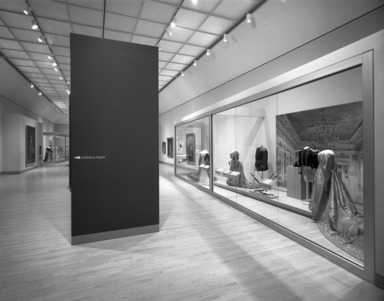
Jewels of the Romanovs: Treasures of the Russian Imperial Court, March 20, 1998 through July 05, 1998 (Image: PHO_E1998i015.jpg Brooklyn Museum photograph, 1998)

Jewels of the Romanovs: Treasures of the Russian Imperial Court, March 20, 1998 through July 05, 1998 (Image: PHO_E1998i016.jpg Brooklyn Museum photograph, 1998)

Jewels of the Romanovs: Treasures of the Russian Imperial Court, March 20, 1998 through July 05, 1998 (Image: PHO_E1998i017.jpg Brooklyn Museum photograph, 1998)

Jewels of the Romanovs: Treasures of the Russian Imperial Court, March 20, 1998 through July 05, 1998 (Image: PHO_E1998i018.jpg Brooklyn Museum photograph, 1998)

Jewels of the Romanovs: Treasures of the Russian Imperial Court, March 20, 1998 through July 05, 1998 (Image: PHO_E1998i019.jpg Brooklyn Museum photograph, 1998)
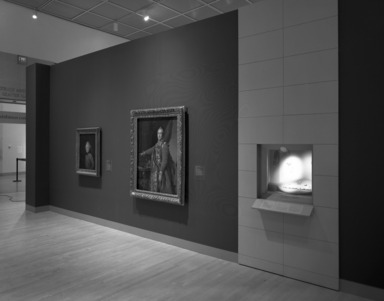
Jewels of the Romanovs: Treasures of the Russian Imperial Court, March 20, 1998 through July 05, 1998 (Image: PHO_E1998i020.jpg Brooklyn Museum photograph, 1998)

Jewels of the Romanovs: Treasures of the Russian Imperial Court, March 20, 1998 through July 05, 1998 (Image: PHO_E1998i021.jpg Brooklyn Museum photograph, 1998)
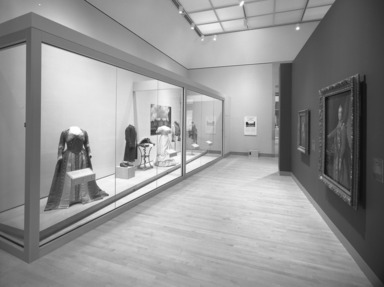
Jewels of the Romanovs: Treasures of the Russian Imperial Court, March 20, 1998 through July 05, 1998 (Image: PHO_E1998i022.jpg Brooklyn Museum photograph, 1998)
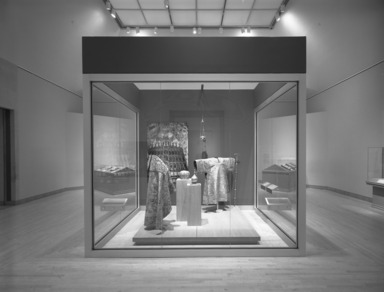
Jewels of the Romanovs: Treasures of the Russian Imperial Court, March 20, 1998 through July 05, 1998 (Image: PHO_E1998i023.jpg Brooklyn Museum photograph, 1998)
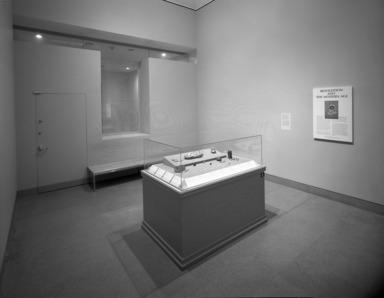
Jewels of the Romanovs: Treasures of the Russian Imperial Court, March 20, 1998 through July 05, 1998 (Image: PHO_E1998i024.jpg Brooklyn Museum photograph, 1998)
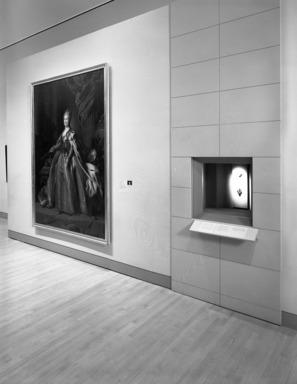
Jewels of the Romanovs: Treasures of the Russian Imperial Court, March 20, 1998 through July 05, 1998 (Image: PHO_E1998i025.jpg Brooklyn Museum photograph, 1998)

Jewels of the Romanovs: Treasures of the Russian Imperial Court, March 20, 1998 through July 05, 1998 (Image: PHO_E1998i026.jpg Brooklyn Museum photograph, 1998)
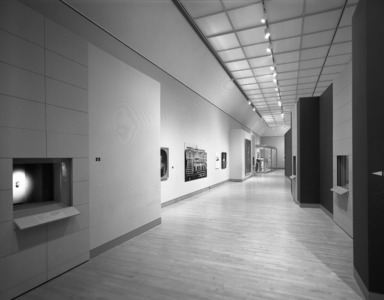
Jewels of the Romanovs: Treasures of the Russian Imperial Court, March 20, 1998 through July 05, 1998 (Image: PHO_E1998i027.jpg Brooklyn Museum photograph, 1998)
Jewels of the Romanovs: Treasures of the Russian Imperial Court
-
February 1, 1998
Jewels of the Romanovs: Treasures of the Russian Imperial Court presents 200 objects, many of which have never before left Russia. Among them is a selection of seventy of the priceless and exquisite crown jewels, as well as royal portraits, court gowns, military uniforms, and jewel-encrusted objects spanning three centuries of the Romanov dynasty. The exhibition, one of whose primary sponsors is the Iris and B. Gerald Cantor Foundation, will be presented at the Brooklyn Museum of Art, it was announced by Museum Director Arnold L. Lehman. Brooklyn will be the exhibition’s final United States venue. Major support has been provided by the Independence Community Foundation of Independence Savings Bank and KeySpan Energy Corporation.
Because the presentation in Brooklyn is the result of recent and intensive negotiations, Jewels of the Romanovs is a late addition to the Museum’s spring calendar. It will be on view March 20 through July 5, 1998
“We are grateful to the Russian Organizing Committee and the American-Russian Cultural Cooperation Foundation, who are responsible for bringing this exceptional exhibition of Russian treasures to the United States, for their cooperation. Following upon the unprecedented success of Monet and the Mediterranean, the Brooklyn Museum of Art’s participation will provide a once-in-a-lifetime opportunity to the people of the City of New York, and of the region, to see these opulent objects from one of the most extraordinary ruling dynasties in modern history,” comments Dr. Lehman.
Jewels of the Romanovs features works of art from five major Russian museum collections. The centerpiece of the exhibition is a selection of the fabulous crown jewels amassed over the centuries by the Russian imperial family. These historic gems come from the holdings of the Russian State Diamond Fund, one of the world’s finest collections of precious stones and jewelry, ordinarily maintained in a limited-access museum beneath the Kremlin Armory. The collection includes post-imperial jewels, a selection of which will also be included in the exhibition.
Jewels of the Romanovs: Treasures from the Russian Imperial Court marks the first time in history that the Russian Government has permitted many of these priceless national treasures to travel outside of Russia. The exhibition commemorates the 125th anniversary of a three-month, twenty-city tour of the United States by Russian Grand Duke Alexis, who was invited by President Ulysses S. Grant in gratitude for Russia’s support of the Union during the Civil War.
The exhibition is presented by the Russian Organizing Committee and the American-Russian Cultural Cooperation Foundation. It was organized by the Executive Committee of the Russian-American project Goodwill Mission: From Past to Future, with the support of the Ministry of Foreign Affairs of the Russian Federation, the Ministry of Culture of the Russian Federation, the Embassy of the Russian Federation in the United States, Gokhran of the Russian Federation, the State Archives of the Russian Federation, ITAR-TASS, the International Cultural Center of the Ministry of Culture of the Russian Federation, Ingosstrakh Ltd., and M.F.M.-N.Y. Ltd.
Lead support for the exhibition at the BMA has been provided by the Iris and B. Gerald Cantor Foundation. Major support has been provided by the Independence Community Foundation of Independence Savings Bank and KeySpan Energy Corporation. Iris Cantor is a member of the Board of Trustees of the Museum. Mrs. Cantor, a philanthropist and art patron, has been a longtime supporter of the Museum. Her contributions, along with those of her late husband B. Gerald Cantor, have included the 460-seat Iris and B. Gerald Cantor Auditorium and a major gift of fifty-eight Rodin sculptures. National support has been provided by Lazare Kaplan International Inc., The Starr Foundation, and Conoco.
In addition to the imperial jewels, the exhibition will include royal portraits and magnificent court costumes worn by the royal family, on loan from the Pavlovsk Museum and Tsarskoye Selo Museum, and rare ecclesiastical objects from the Yaroslavl Monastery. Also included are original letters and photographs from the State Archives of the Russian Federation detailing the official visit of Grand Duke Alexis to the United States in 1875.
Among the treasures featured in the exhibition are three of the seven "Wonders of the State Diamond Fund.” They include what is perhaps the most famous sapphire in the world. More than 260 carats, it was purchased by Emperor Alexander II at the London Great Exhibition of 1862 as a gift to his wife the Empress Maria Alexandrovna, and is unique for its combination of size, color, clarity, and extraordinary cut. Also on view will be one of the rarest and most important gems in the collection, known as Caesar’s Ruby. Originally thought to be a ruby belonging to Augustus Caesar, the 52-carat rubellite tourmaline is cut and mounted in the form of a cluster of grapes and was presented to Catherine the Great in 1777 by King Gustav of Sweden. Among the famous trio of jewels is a memorial bracelet created after the death of Alexander I in 1825 that features a miniature portrait of the late emperor surmounted by the largest table-cut diamond in the world.
Also from the State Diamond Fund will come six superb examples of imperial orders that were specially made for members of the Romanov house, among them the Star of the Order of St. Andrew, the most important order of the Russian empire, awarded to members of the imperial family and Russians who made extraordinary contributions to the empire, and the Badge of the Order of St. Anne, whose centerpiece is an exquisite oval medallion of gold, mounted on a frame set with diamonds and rubies.
A number of exquisite jewel-encrusted ecclesiastical objects, none of which have ever left Russia, from the Yaroslavl Architectural and Historical State Museum-Preserve are included in the exhibition, among them five seventeenth-century pendants of carved sapphires and quartz.
The paintings and costumes from the Pavlovsk State Museum-Preserve and the Tsarskoye Selo State Museum-Preserve provide a sense of the lifestyle and appearance of members of the Russian imperial family, including a spectacular peacock-blue velvet gown with gold brocade embroidery that was worn by Grand Duchess Xenia Alexandrovna to the wedding of her brother Nicholas II. Kevin Stayton, Curator of Decorative Arts, will coordinate the exhibition at the Brooklyn Museum of Art.
State Diamond Fund
The State Diamond Fund of the Russian Federation is considered among the world’s finest and most valuable collections of precious stones and jewelry. The collection was established by Peter the Great in 1719 and restructured by the Soviet government. Originally stored in the Diamond Room in St. Petersburg, the jewels were moved to Moscow for safekeeping on the eve of World War I by Czar Nicholas. In 1917 the Revolution brought the Romanov dynasty to an abrupt end, and the jewels were all but forgotten until 1922, when they were rediscovered in the Kremlin.
The Romanov Dynasty
The imperial dynasty of the Romanovs ruled Russia from 1613 until the Russian Revolution in 1917. Among its most famous members were Peter the Great (ruled 1689–1725) and Catherine the Great (ruled 1762–1796). Peter the Great is known for turning Russia away from some of its old traditions and adopting many modern Western European customs. He built St. Petersburg in the European style, Westernized styles of dress, and simplified the Russian alphabet.
Catherine the Great was born in Germany and assumed the throne when her husband was overthrown. A shrewd administrator and powerful leader who spent millions on palaces, art collections, jewels, and clothes, she was responsible for introducing the classical style and the French language to the Russian court.
The last Romanov czar was Nicholas II, who was executed in 1918 along with his wife Alexandra and their young children after the Bolsheviks had come to power.
The Brooklyn Museum of Art is the final venue of a United States tour of Jewels of the Romanovs that began at the Corcoran Gallery of Art, Washington, D.C., in early 1997.
Vitaly Ignatenko is Chairman and Mikhail Gusman is General Director of the Russian Organizing Committee. Former President Gerald R. Ford and Maurice Tempelsman are Co-Chairmen of the U. S. Honorary Committee. The Hon. James W. Symington is Chairman of the Board of the American-Russian Cultural Cooperation Foundation.
Tickets for the exhibition are required. Timed and dated tickets will be available at a cost of $10 for adults, seniors, and students; $6 for children under twelve. For Museum Members special VIP tickets, which are not timed or dated, will be available for $10. Members may purchase discounted tickets prior to March 20, at Museum Admissions only, at a cost of $8.
Tickets may be purchased at Museum Admissions or by calling the special toll-free number 1-888-8-JEWEL-8. Ticket prices include general Museum admission.
A variety of group tour options is available. For information about group tours call (718) 638-5000, ext. 234. There will also be an audio tour available at $4.
A wide range of public programs will be presented, among them gallery talks and lectures. A series of silent films with live musical accompaniment, Early Russian Cinema: Films Before the Revolution (1908–1917), will be presented in the Iris and B. Gerald Cantor Auditorium on Sundays at 3 p.m. on March 29, April 5, April 12, April 19, May 24, and June 21, which will consist of silent films with live musical accompaniment.
The exhibition is accompanied by a lavishly illustrated, full-color catalogue that will be available in the Museum shops along with a large selection of jewelry and other merchandise related to the exhibition.
A special café with a Russian-inspired menu will be available for visitors.
Masters of Color and Light: Homer, Sargent, and the American Watercolor Movement, a major exhibition of 150 seldom seen works from the Museum’s permanent collection, originally scheduled to open in March 1998, has been postponed to accommodate the exhibition of imperial jewels. It will now be on view May 8 through August 23, 1998.
Brooklyn Museum Archives. Records of the Department of Public Information. Press releases, 1995 - 2003. 01-06/1998, 041-46.
View Original -
January 1, 1998
Masters of Color and Light: Homer, Sargent, and the American Watercolor Movement has been postponed and is now scheduled to be on view May 8 through August 23, 1998. The change has been made to accommodate a late addition to the spring calendar, Jewels of the Romanovs: Treasures of the Russian Imperial Court, which will open at the Brooklyn Museum of Art, where it will be the final United States venue before the 200 objects, including the Russian crown jewels, return to Moscow. That exhibition, drawn from five Russian museums, will open on March 20, 1998, and will run through July 5, 1998.
The long-planned watercolor exhibition will include 150 seldom-seen masterpieces created between the late eighteenth and the mid-twentieth century, all drawn from the Museum’s exceptional holdings of American watercolors. A fully illustrated catalogue written [by] BMA curators Linda S. Ferber and Barbara Dayer Gallati will accompany the exhibition.
Masters of Color and Light: Homer, Sargent, and the American Watercolor Movement celebrates the one hundred seventy-fifth anniversary of the founding of the Museum’s collections by highlighting an area in which the Brooklyn Museum of Art was an early pioneer. The Museum’s two landmark purchases of watercolors by John Singer Sargent (1909) and Winslow Homer (1912) established the foundation of what is today one of the largest and most important public collections of American watercolors, a collection that documents two centuries of changing attitudes toward this challenging yet accessible medium. While rich holdings of Sargent and Homer are among the Museum’s best-known treasures, they represent only a fraction of this fine historical collection, which begins in the late eighteenth century and contains representatives of every major movement into the middle of this century.
Masters of Color and Light is organized as a chronological thematic survey from 1777 to 1980. Among the early watercolors to be shown are examples by topographical artists such as George Beck, William Guy Wall, George Harvey, and Fanny Palmer, who recorded American landscape and city views often intended for publication as prints. Works after 1870 will feature such prominent artists as William T. Richards, Homer, Thomas Eakins, Thomas Moran, Edwin Austin Abbey, and Sargent who used watercolor for highly finished and often large exhibition pieces. In the twentieth century, artists such as Georgia O’Keeffe, John Marin, Stuart Davis, Mark Rothko, and Sam Francis have interpreted the medium as a brilliant vehicle for modernist and avant-garde interests.
The catalogue to the exhibition will be the first major publication devoted to the history and highlights of the collection. The volume will be published by the Museum in association with the Smithsonian Institution Press. An illustrated brochure will also be available in the exhibition gallery free of charge. In addition, the Museum will host educational programs for children, families, and adults. These will include free gallery talks, studio art classes, an educators’ open house, and drop-in workshops for adults and children.
Masters of Colors and Light: Homer, Sargent, and the American Watercolor Movement is made possible with the generous support of Aetna.
Additional support has been provided by the Gilbert and Ildiko Butler Foundation, the Ronald H. Cordover Family Foundation, Mr. and Mrs. Leonard L. Milberg, Mr. and Mrs. John S. Tamagni, Mr. and Mrs. James H. Ottaway, Jr., Mrs. Hugh Tatlock, and Françoise and Harvey Rambach.
Funds for the catalogue were also provided through the generosity of The Overbrook Foundation and Furthermore, the Publication Program of the J. M. Kaplan Fund, as well as a publications endowment created by the Iris and B. Gerald Cantor Foundation and The Andrew W. Mellon Foundation.
Brooklyn Museum Archives. Records of the Department of Public Information. Press releases, 1995 - 2003. 01-06/1998, 001-3.
View Original -
February 20, 1998
Director Arnold L. Lehman
Cordially invites you to a Preview Presentation
On Friday February 20, 1998
12:30 - 2:00 p.m.
In the Sixth Floor Boardroom of
The Brooklyn Museum of Art
200 Eastern Parkway
Brooklyn, New York
Jewels of the Romanovs: Treasures of the Russian Imperial Court.
An exhibition of 200 objects, many of which have never before left Russia, among them a selection of seventy of the Crown Jewels from the State Diamond Fund. The exhibition features works of art from five major Russian museum collections and also includes court costumes, jewel-encrusted ecclesiastical objects, court gowns, military uniforms, and rare archival material spanning more than three centuries of the Romanov Dynasty.
The exhibition is presented by the Russian Organizing Committee and the American-Russian Cultural Cooperation Foundation. It was organized by the Executive Committee of the Russian-American project Goodwill Mission: From Past to Future. Mikhail S. Gusman, First Deputy Chairman and Chief Executive Officer of Goodwill Mission: From Past to Future, will make a presentation and answer questions about this extraordinary exhibition that has just been added to the Brooklyn Museum of Art spring calendar, where it will be on view March 20 through July 5. It will be the final United States presentation.
A buffet luncheon will be served.
R.S.V.P. (718) 638-5000, ext. 331
The presentation at the Brooklyn Museum of Art has been made possible, in part, by the
Iris and B. Gerald Cantor Foundation
National support for this exhibition has been provided by
Lazare Kaplan International Inc., The Starr Foundation, and Conoco’s
Brooklyn Museum Archives. Records of the Department of Public Information. Press releases, 1995 - 2003. 01-06/1998, 160.
View Original -
April 1, 1998
Audio tours are available in both English and Russian for Jewels of the Rom[a]novs: Treasures of the Russian Imperial Court, on view at the Brooklyn Museum of Art through July 5. Actress Isabella Rossellini has narrated the English-language version. There is also a Russian-language Acoustiguide available, narrated by voice-over professional Ilya Maslov, a native of Moscow who is a composer and pianist. Each takes the listener step-by-step through the masterpieces of the exhibition’s 200 objects spanning the reign of the Romanovs. The centerpiece of the exhibition is a selection of seventy of the Russian crown jewels. The exhibition also includes elaborate court costumes such as a blue velvet gown with a gold-embroidered train that cost $250,000 when it was purchased in the late 19th century; jewel-encrusted religious objects; and royal portraits. The audio tours are available for $4 and may be reserved in advance when ordering tickets through the toll-free number 1-888-8-JEWEL-8.
A three-thousand-square-foot Shop located on the fifth floor directly across from the Jewels of the Rom[a]novs exhibition is dedicated to items relating to the exhibition. Among them are whimsical Russian arts and crafts, jewelry, books, household items, lacquer boxes and candlesticks, nesting dolls, jewel postcards, and icons. The shop also has Russian amber, antique Russian jewelry, and children’s books and toys, including dolls and Russian wooden and tin play-things. Books about the imperial family, such as Royal Russia: The Private Albums of the Russian Imperial Family and Nicholas and Alexandra, are also available. Some of these items are also for sale in the Museum’s first-floor Shop.
The Prospekt Café, located in a sunny spot overlooking the Museum Sculpture Garden, serves coffees, Russian teas, and vodka, alongside light fare with a Russian flavor, including sumptuous desserts. It is open from 11 a.m. to 4 p.m. Wednesdays through Fridays, 11 a.m. to 9 p.m. on Saturdays, and 11 a.m. to 6 p.m. on Sundays through July 5.
A wide range of public programs will be presented in conjunction with Jewels of the Romanovs: Treasures of the Russian Imperial Court through July 5, including a Russian Film Series, Lecture Series, Slide Presentation, and Family Performances such as a Russian-language musical production of Puss in Boots.
The Romanov Film Series, which begins on Sunday, May 24, at 2 p.m. with short Russian animated films from 1912 by Ladislaw Starewicz, includes a 1927 compilation film by Esther Shub that incorporates footage from the tsar’s home movies. This will be screened on Sunday, June 14, at 2 p.m. Both films are silent and will be accompanied by live music. The films are free to Jewels of the Romanovs ticket holders on the date of the screening; otherwise, tickets are $6; $4 for Members, students, and older adults. All films are shown in the Iris and B. Gerald Cantor Auditorium on the Museum’s third floor.
A lecture series, free with Museum admission, begins on Sunday, April 25, at 4:30 p.m., with William Craft Brumfield, Professor of Slavic Studies at Tulane University, who will examine the historical context for the architecture of St. Petersburg, Russia’s capital city. On Saturday, May 9, at 2 p.m., independent scholar B. A. Nicholson will lecture on the life of Empress Maria Feodorovna, wife of Tsar Paul I, who built the Pavlovsk Palace.
Slide presentations of the exhibition will be given on most Saturdays at 2 p.m.
For children is Story Corner on Saturday, June 6, at 4 p.m., where an episode inspired by the glittering jewels in the Jewels of the Romanovs: Treasures of the Russian Imperial Court will be told.
A primary sponsor of the Jewels of the Romanovs exhibition is the Iris and B. Gerald Cantor Foundation, and major support has been provided by the Independence Savings Bank and KeySpan Energy Corporation. National support has been provided by Lazare Kaplan International, Inc., The Starr Foundation, and Conoco. The Russian[-] language version of the Acoustiguide was sponsored by the Russian-language newspaper Novoye Russkoye Slovo.
Brooklyn Museum Archives. Records of the Department of Public Information. Press releases, 1995 - 2003. 01-06/1998, 115-117.
View Original -
March 1, 1998
A series of Russian films will be presented at the Brooklyn Museum of Art in conjunction with the exhibition Jewels of the Romanovs: Treasures of the Russian Imperial Court. Featured are a recent documentary, Romanov (1995), and a series of five silent film programs with live musical accompaniment. The films selected were made before the 1917 Revolution and explore life and culture during the Romanov era. The series also reveals the diverse genres that Russian filmmakers were developing at this time.
All films are free to Jewels of the Romanovs ticket holders on the day of the screening, with the exception of the Anne Basser video Romanov, which is free with Museum admission. Otherwise, tickets are $6; $4 for Members, students, and older adults. The films will be shown on Sunday at 2 p.m. in the Iris and B. Gerald Cantor Auditorium
Romanov, 1995. 43 min.
March 29, 2 p.m.
Directed by Anne Basser. Video. Free screening
The world has been fascinated with the Romanov family since their assassination in Russia in 1918. The discovery of the nine Romanov skeletons in a Russian forest in 1993 has further deepened contemporary interest in Russia’s imperial past. Romanov traces the history of the powerful and wealthy dynasty that ruled Russia from the early seventeenth century to their overthrow following the 1917 Revolution.
Cameraman’s Revenge, Frogland, and other films by Ladislaw Starewicz. 70-min. program. 16 mm. Video
April 5, 2 p.m.
Brian Dewan, a composer and musicologist specializing in topical folk songs, will provide live musical accompaniment on electric zither.
Ladislaw Starewicz, an art student in the 1910s, found work in the burgeoning Moscow film industry and soon distinguished himself as a brilliant technician and inventive animator. By 1912 he was writing, directing, and shooting live-action films and animated cartoons. He did his most original work in stop-motion puppet animation. Shortly after the Revolution he moved to France, where he continued to work in the film industry and won several international awards for his animation.
A Child of the Big City, The 1002nd Russ, Daydreams. Directed by Evgenii Bauer. 93-min. program. Video. Silent
April 12, 2 p.m.
Walter Thompson, composer-conductor, will provide live musical accompaniment using a technique known as sound painting.
Evgenii Bauer began his work in film in 1913 as a set designer and director for the Pathe and Drankov studios in Moscow. In less than five years as a director he completed over sixty films, many of which bec[a]me classics of the tsarist era. This program highlights the range of his work, from the social melodrama A Child of the Big City (1913) to the erotic comedy The 1002nd Russ (1915) to the psychological gothic melodrama Daydreams (1915). Bauer died in 1917 while scouting locations in the Crimea. Nonetheless, his films exerted a lasting influence on Soviet cinema. A Milestone Film and Video Program.
The Departure of a Great Old Man, The Queen of Spades. Directed by Iakov Protazanov. 95-min. program. Video. Silent
April 19, 2 p.m.
Musical accompaniment by the Walter Thompson Orchestra
Protazanov began his film career in 1905 as an actor and then switched to directing. He completed more than forty films between 1909 and 1917. He was known for grand historical films and literary adaptations that often starred the great Russian actor Ivan Mosjoukine. He continued making films for the Soviets until his death in 1945. The Departure of a Great Old Man (1912), which provoked legal action by the Tolstoy family for its scandalous portrayal of Tolstoy, and The Queen of Spades, starring the great Russian actor Mosjoukine in one of his most compelling roles, are among his greatest films. A Milestone Film and Video Program.
Cameraman’s Revenge, Frogland, and other films by Ladislaw Starewicz. 70-min. program. 16 mm. Video. Silent
May 24, 2 p.m. (see April 5)
Music by Brian Dewan
The Fall of the Romanov Dynasty, 1927. Written and directed by Esther Shub. 101 min. Silent
June 21, 2 p.m.
Music by Brian Dewan and musical guests on guitar and percussion
Sponsored for the tenth anniversary of the 1917 Revolution, The Fall of the Romanov Dynasty is an engrossing reenactment of the history of tsarist Russia from 1912 through World War I and the 1917 revolutions of February and October. Shub’s film combines newsreels of the pre-revolutionary period and home movies of Tsar Nicholas II taken by the court photographer. Juxtaposing the leisure activities of the Romanov family with strikes, bread lines, arrests, and war, Shub created a montage in the tradition of Eisenstein. The film remains a classic example of the compilation film and of early Soviet cinema.
The exhibition Jewels of the Romanovs: Treasures of the Russian Imperial Court will be on view at the Brooklyn Museum of Art March 20 to July 5, 1998. It comprises 200 objects, many of which have never before left Russia, including a selection of seventy of the priceless and exquisite crown jewels, as well as royal portraits, court gowns, military uniforms, and jewel-encrusted objects spanning three centuries of the Romanov dynasty. Timed and dated tickets are available at a cost of $10 for adults, seniors, and students; $6 for children under twelve. Tickets may be purchased at Museum Admissions or by calling a special toll free number: 1-888-8-JEWEL-8.
Brooklyn Museum Archives. Records of the Department of Public Information. Press releases, 1995 - 2003. 01-06/1998, 085-88.
View Original -
March 16, 1998
Jewels of the Romanovs: Treasures of the Russian Imperial Court, presents 200 objects, many of which have never before left Russia.
Jewels of the Romanovs features works of art from five major Russian museum collections, many of which have never before left Russia. Among them is a selection of seventy of the priceless and exquisite Crown Jewels, amassed over three centuries by the Russian imperial family and ordinarily maintained in a limited-access museum beneath the Kremlin Armory.
In addition to the imperial jewels, the exhibition will include royal portraits and magnificent court costumes worn by the royal family, on loan from the Pavlovsk Museum and Tsarskoye Selo Museum and rare, jewel encrusted ecclesiastical objects from the Yaroslavl Monastery, none of which have ever before traveled.
Museum Director Arnold L. Lehman, and General Director Mikhail Gusman of the Russian Organizing Committee will be available for interviews and photo opportunities during the preview.
Brooklyn Museum Archives. Records of the Department of Public Information. Press releases, 1995 - 2003. 01-06/1998, 053.
View Original -
June 1, 1998
Jewels of the Romanovs: Treasures of the Russian Imperial Court will be extended an additional week at the Brooklyn Museum of Art, the final stop on the exhibition’s five city tour of the United States. The exhibition, which opened on March 20, is now scheduled to close on July 12.
“We are extremely grateful to the Russian Executive Committee for allowing these fabulous treasures to remain at the Brooklyn Museum of Art a week longer, before their return to Moscow. The exhibition has been extremely popular with Museum visitors and this will allow an even larger audience a final opportunity to see these magnificent objects created during one of the most fascinating periods in Russian history,” states Museum Director Arnold L. Lehman.
The exhibition presents 200 exquisite works from five major Russian museum collections, many of which have never before been allowed to leave Russia. The centerpiece is a selection of seventy of the priceless crown jewels that come from the holdings of the Russian State Diamond Fund, one of the world’s finest collections of precious stones and jewelry, maintained in a limited-access museum beneath the Kremlin.
A number of exquisite jewel-encrusted ecclesiastical objects from the Yaroslavl Architectural and Historical State Museum-Preserve, none of which has ever left Russia, are included in the exhibition. Imperial portraits and court costumes from the Pavlovsk State Museum-Preserve and the Tsarskoye Selo State Museum-Preserve provide a sense of the lifestyle of members of the Romanov dynasty. The exhibition also includes archival material from the State Archives of the Russian Federation.
Admission is by ticket only. Timed and dated tickets are available at $10 for adults and $6 for children under 12. They may be purchased at Museum Admissions or by calling 1-888-8-JEWEL-8.
The exhibition is presented by the Russian Executive Committee and the American-Russian Cultural Cooperation Foundation. Lead support for the presentation at the Brooklyn Museum of Art is provided by the Iris and B. Gerald Cantor Foundation. Major support is provided by the Independence Community Foundation of the Independence Savings Bank and by KeySpan Energy Corporation. National support has been provided by Lazare Kaplan International Inc., The Starr Foundation, and Conoco, Inc.
Brooklyn Museum Archives. Records of the Department of Public Information. Press releases, 1995 - 2003. 01-06/1998, 147-148.
View Original -
March 1, 1998
An installation of approximately fifteen objects created in the workshops of Peter Carl Fabergé in the late nineteenth and the early twentieth century, most of them seldom seen works from the Brooklyn Museum of Art’s collection, will be presented in conjunction with Jewels of the Romanovs: Treasures of the Russian Imperial Court. Both exhibitions will be on view from March 20 through July 5.
Included in the installation will be the exquisite Imperial Lily of the Valley Fabergé egg of gold, enamel, diamonds, rubies, pearls, and rock crystal, designed by Mikhail Evlampievich Perkhin, on loan from the Forbes Collection. Among the other Fabergé treasures will be a selection of miniature animals, scent bottles, and an extraordinary clock designed for Fabergé by Henrik Wigstrom, created of lapis lazuli, jade, diamonds, enamel, and gold. Also displayed will be a lapis lazuli and gold Jewel Chest from a private collection that was made by Samuel Arndt and probably given by Alexander II to the Empress Maria Alexandrovna on her fortieth birthday, in 1864.
The installation will be on view in the Cantor Gallery on the fifth floor, outside the entrance to Jewels of the Romanovs: Treasures of the Russian Imperial Court, an exhibition of 200 objects, many of which have never before left Russia. Among them is a selection of seventy of the priceless and exquisite crown jewels, as well as royal portraits, court gowns, military uniforms, and jewel-encrusted religious objects spanning three centuries of the Romanov dynasty.
Brooklyn Museum Archives. Records of the Department of Public Information. Press releases, 1995 - 2003. 01-06/1998, 092-93.
View Original -
March 20, 1998
Film and Video Programs
Melodrama to Revolution: The Romanov Era
A series of films that explores Russian fllmmaking and society under the Romanovs. All films are free to Romanov ticket holders on the day of the screening. Otherwise, tickets are $6; $4 for Members, students, and older adults.
2 p.m. Sunday Screenings
lris and B. Gerald Cantor Auditorium
Sunday, March 29
Romanov. Directed by Anne Basser. 1995. 43 min. Video. Free screening
The world has been fascinated with the Romanov family since their assassination in Russia in 1918. The discovery of the nine Romanov skeletons in a Russian forest in 1993 has further deepened contemporary interest in Russia’s imperial past. Romanov traces the history of the powerful and wealthy dynasty that ruled Russia from the early seventeenth century to their overthrow following the 1917 Revolution.
Sunday, April 5
Cameraman’s Revenge, Frogland, and other films by Ladislaw Starewicz. Musical accompaniment by Brian Dewan (Zither). 70 min. program. 16 mm and video. Silent
Starewicz, an art student in the 1910s, found work in the burgeoning Moscow film industry and soon distinguished himself as a brilliant technician and inventive animator. By 1912 he was writing, directing, and shooting live-action films and animated cartoons. He did his most original work in stop-motion puppet animation. Shortly after the Revolution he moved to France, where he continued to work in the film industry and won several international awards for his animation.
Sunday, April 12
A Child of the Big City, The 1002nd Russ, Daydreams.
Films by Evgenii Bauer. Musical accompaniment by the Walter Thompson Orchestra. 93[-]min. program. Video. Silent
Evgenii Bauer began his work in film in 1913 as a set designer and director for the Pathe and Drankov studios in Moscow. Producer Alexander Khanzhonkov encouraged Bauer to direct, and in less than five years Bauer completed over sixty films, many of which became classics of the tsarist era. This program highlights the range of his work, from the social melodrama A Child of the Big City (1913) to the erotic comedy The 1002nd Russ (1915) to the psychological gothic melodrama Daydreams (1915). Tragically, Bauer died in 1917 while scouting locations in the Crimea. Nonetheless, his films exerted a lasting influence on Soviet cinema.
Sunday, April 19
The Departure of a Great Old Man, The Queen of Spades. Films by Iakov Protazanov. Musical accompaniment [to come]. 95[-]min. program. Video. Silent
Protazanov began his film career in 1905 as an actor and then switched to directing. He completed more than forty films between 1909 and 1917. He was known for grand historical films and literary adaptations that often starred the great Russian actor Ivan Mosjoukine. He continued making films for the Soviets until his death in 1945. The films in the program are a controversial film on Tolstoy's Last days, The Departure of a Great Old Man (1912), which provoked legal action by the Tolstoy family for its scandalous portrayal of Tolstoy, and The Queen of Spades, starring Mosjoukine in one of his most compelling roles.
Sunday, May 24
Cameraman’s Revenge, Frogland, and other films by Ladislaw Starewicz. Musical accompaniment by Brian Dewan (Zither). 70[-]min. program. 16 mm. Video. Silent
(see April 5)
Sunday, June 21
The Fall of the Romanov Dynasty. Written and directed by Esther Shub. 1927. 101 min. Silent. Music by Brian Dewan (Zither), and musical guests on guitar and percussion
Sponsored for the tenth anniversary of the 1917 Revolution, The Fall of the Romanov Dynasty is an engrossing reenactment of the history of tsarist Russia from 1912 through World War I and the 1917 revolutions of February and October. Shub’s film combines newsreels of the pre-revolutionary period and home movies of Tsar Nicholas II taken by the court photographer. Juxtaposing the leisure activities of the Romanov family with strikes, bread lines, arrests, and war, Shub created a montage in the tradition of Eisenstein. The film remains a classic example of the compilation film and of early Soviet cinema.
Lecture Series
2 p.m., Saturdays
Iris and B. Gerald Cantor Auditorium
Free with BMA Admission.
Saturday, April 25
St. Petersburg: The Imperial Design
William Craft Brumfield, Professor of Slavic Studies at Tulane University, New Orleans.
Since the eighteenth century, St. Petersburg has been acclaimed as one of the world’s most dramatically beautiful cities. Dr. Brumfield’s lecture examines the historical context for the evolution of the city’s architecture, from its early baroque style to the imperial grandeur of the eighteenth and early nineteenth century. The lecture concludes with the modernist styles and classic revival movements at the beginning of the twentieth century.
Saturday, May 2
Jewels of the Romanovs: Treasures of the Imperial Court
Nicholas Nicholson, curator of the exhibition. Nicholson will bring his expertise on jewelry and decorative arts to the material in the exhibition.
Brooklyn Museum Archives. Records of the Department of Public Information. Press releases, 1995 - 2003. 01-06/1998, 080-84.
View Original -
March 20, 1998
Jewels of the Romanovs: Treasures of the Russian Imperial Court marks the first time in history that the Russian Government has permitted these priceless national treasures to travel to the United States. The exhibition features over 200 works of art from five major Russian museum collections. This is truly a rare opportunity to view the fabulous Crown jewels amassed over the centuries by the Russian Imperial family. These historic gems come from the holdings of the Russian State Diamond fund, one of the world’s finest collection[s] of precious stones and jewelry, which is ordinarily held in a limited access museum beneath the Kremlin Armory. Among the jewels in the collection is perhaps the most famous sapphire in the world. More than 260 carats, it is unique for its combination of size, color, clarity[,] and extraordinary cut. The exhibition will also display royal portraits, remarkable court costumes worn by the royal family, and exquisite ecclesiastical objects from the Yaroslavi Monastery.
Don’t miss this rare opportunity to view these Russian treasures! Book your group tour now.
a. Self Guided Tour - $10 per person
For groups that prefer to explore the exhibition on their own. Please note that we do not allow lecturing in the exhibition. Includes a ticket to the exhibition and admission to the Museum.
b. Audio Tour - $14 per person
This 40 minute audio tour will teach your group about the history of the Romanov royal family through a delightful description of their personalities and interests. Includes an audio guide, a ticket to the exhibition, and admission to the Museum.
c. Slide Talk - $16 per person
This 40 minute slide presentation led by a Museum docent is the perfect introduction to the history, lifestyle, and personalities of the Romanov family and their place in Russian history. Discover how this exceptional jewel collection was acquired, hidden in times of peril[,] and even today used as insurance for Russian currency. Includes a slide talk, a ticket to the exhibition[,] and admission to the Museum.
d. Guided Tour - $22 per person
Tour the exhibition up close without the crowds with an expert Museum docent. This exclusive tour is offered when the galleries are not open to the general public. There is a 25 person minimum per guided tour. This tour includes a docent led tour with your ticket to the exhibition and admission to the Museum.
Group Meals: - $13 per person
Zakuski Buffet
Group lunch reservations are recommended. All groups enjoy reserved seating in our exclusive group tour dining area. Please call the above number for more information.
Brooklyn Museum Archives. Records of the Department of Public Information. Press releases, 1995 - 2003. 01-06/1998, 055.
View Original -
March 18, 1998
You are cordially invited to join the
Director and Members of the
Brooklyn Museum of Art
for a cocktail reception and
a private viewing for New York Concierges
of the exhibition
Jewels of the Romanovs:
Treasures of the Russian Imperial Court
Wednesday, March 18, 1998
6- 8:30 p.m.
at the Brooklyn Museum of Art
200 Eastern Parkway
Jewels of the Rom[a]novs at the Brooklyn Museum of Art March 20-July 5, 1998, is an exhibition of 200 treasures, among them the magnificent Russian crown Jewels, jewel encrusted religious objects, imperial portraits, court costumes, and rare archival material. The Brooklyn Museum of Art is the final United States venue. The exhibition is organized by the Russian Executive Committee of the project, “Goodwill Mission: From Past to Future.”
RSVP by March 16, 1998
Ruder Finn Arts & Communications Counselors
(212) 593-6473
Lead support for the exhibition
at the BMA has been provided by the
Iris and B. Gerald Cantor Foundation
Major support has been provided by the
Independence Savings Bank
and
KeySpan Energy Corporation
National support for this exhibition
has been provided by:
Lazare Kaplan International, Inc.
The Starr Corporation
Conoco
Brooklyn Museum Archives. Records of the Department of Public Information. Press releases, 1995 - 2003. 01-06/1998, 054.
View Original
